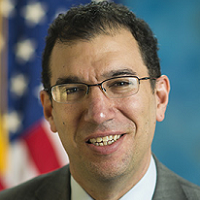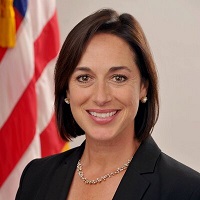
 By Andy Slavitt and Karen DeSalvo
By Andy Slavitt and Karen DeSalvo
Twitter: @CMSgov / @ONC_HealthIT
Where We’ve Been
As we mentioned in a speech previously, the Administration is working on an important transition for the Electronic Health Record (EHR) Incentive Program. We have been working side by side with physician organizations and have listened to the needs and concerns of many about how we can make improvements that will allow technology to best support clinicians and their patients. While we will be putting out additional details in the next few months, we wanted to provide an update now.
In 2009, the country embarked on an effort to bring technology that benefits us in the rest of our lives into the health care system. The great promise of technology is to bring information to our fingertips, connect us to one another, improve our productivity, and create a platform for a next generation of innovations that we can’t imagine today.
Not long ago, emergency rooms, doctor’s offices, and other facilities were sparsely wired. Even investing in technology seemed daunting. There was no common infrastructure. Physician offices often didn’t have the capital to get started and it was hard for many to see the benefit of automating silos when patient care was so dispersed. We’ve come a long way since then with more than 97 percent of hospitals and three quarters of physician offices now wired.
It’s taken a tremendous commitment by physicians, hospitals, technologists, patient groups and experts from all over the country to make the progress we’ve made together in a few short years. The EHR Incentive Programs were designed in the initial years to encourage the adoption of new technology and measure the benefits for patients. And while it helped us make progress, it has also created real concerns about placing too much of a burden on physicians and pulling their time away from caring for patients.
Transitioning From Measuring Clicks to Focusing on Care
Last year, the Administration and Congress took two extraordinary steps to put patients at the center of how we pay for care and support physicians. First, the Administration set a goal that 30 percent in 2016 and 50 percent in 2018 of Medicare payments will be linked to getting better results for patients, providing better care, spending healthcare dollars more wisely, and keeping people healthy. And, second, Congress advanced this goal through the passage of the Medicare Access and CHIP Reauthorization Act of 2015 (MACRA), which considers quality, cost, and clinical practice improvement activities in calculating how Medicare physician payments are determined. While MACRA also continues to require that physicians be measured on their meaningful use of certified EHR technology for purposes of determining their Medicare payments, it provides a significant opportunity to transition the Medicare EHR Incentive Program for physicians towards the reality of where we want to go next.
What Comes Next
We have been working side by side with physician and consumer communities and have listened to their needs and concerns. As we move forward under MACRA, we will be sharing details and inviting comment as we roll out our proposed regulations this spring. All of this work will be guided by several critical principles:
- Rewarding providers for the outcomes technology helps them achieve with their patients.
- Allowing providers the flexibility to customize health IT to their individual practice needs. Technology must be user-centered and support physicians.
- Leveling the technology playing field to promote innovation, including for start-ups and new entrants, by unlocking electronic health information through open APIs – technology tools that underpin many consumer applications. This way, new apps, analytic tools and plug-ins can be easily connected to so that data can be securely accessed and directed where and when it is needed in order to support patient care.
- Prioritizing interoperability by implementing federally recognized, national interoperability standards and focusing on real-world uses of technology, like ensuring continuity of care during referrals or finding ways for patients to engage in their own care. We will not tolerate business models that prevent or inhibit the data from flowing around the needs of the patient.
What This Means for Doctors and Hospitals
As we work through a transition from the staged meaningful use phase to the new program as it will look under MACRA, it is important for physicians and other clinicians to keep in mind several important things:
- The current law requires that we continue to measure the meaningful use of ONC Certified Health Information Technology under the existing set of standards. While MACRA provides an opportunity to adjust payment incentives associated with EHR incentives in concert with the principles we outlined here, it does not eliminate it, nor will it instantly eliminate all the tensions of the current system. But we will continue to listen and learn and make improvements based on what happens on the front line.
- The MACRA legislation only addresses Medicare physician and clinician payment adjustments. The EHR incentive programs for Medicaid and Medicare hospitals have a different set of statutory requirements. We will continue to explore ways to align with principles we outlined above as much as possible for hospitals and the Medicaid program.
- The approach to meaningful use under MACRA won’t happen overnight. Our goal in communicating our principles now is to give everyone time to plan for what’s next and to continue to give us input. We encourage you to look for the MACRA regulations this year; in the meantime, our existing regulations – including meaningful use Stage 3 – are still in effect.
- In December, Congress gave us new authority to streamline the process for granting hardship exception’s under meaningful use. This will allow groups of health care providers to apply for a hardship exception instead of each doctor applying individually. This should make the process much simpler for physicians and their practice managers in the future. We will be releasing guidance on this new process soon.
These principles we’ve outlined here reflect the constructive and clear articulation of issues and open sharing of views and data by stakeholders across the health care system, but they also promote our highest priority – better care for the beneficiaries of the Medicare and Medicaid program and patients everywhere.
The challenge with any change is moving from principles to reality. The process will be ongoing, not an instant fix and we must all commit to learning and improving and collaborating on the best solutions. Ultimately, we believe this is a process that will be most successful when physicians and innovators can work together directly to create the best tools to care for patients. We look forward to working collaboratively with stakeholders on advancing this change in the months ahead.
This article was originally published on The CMS Blog and is republished here with permission.
